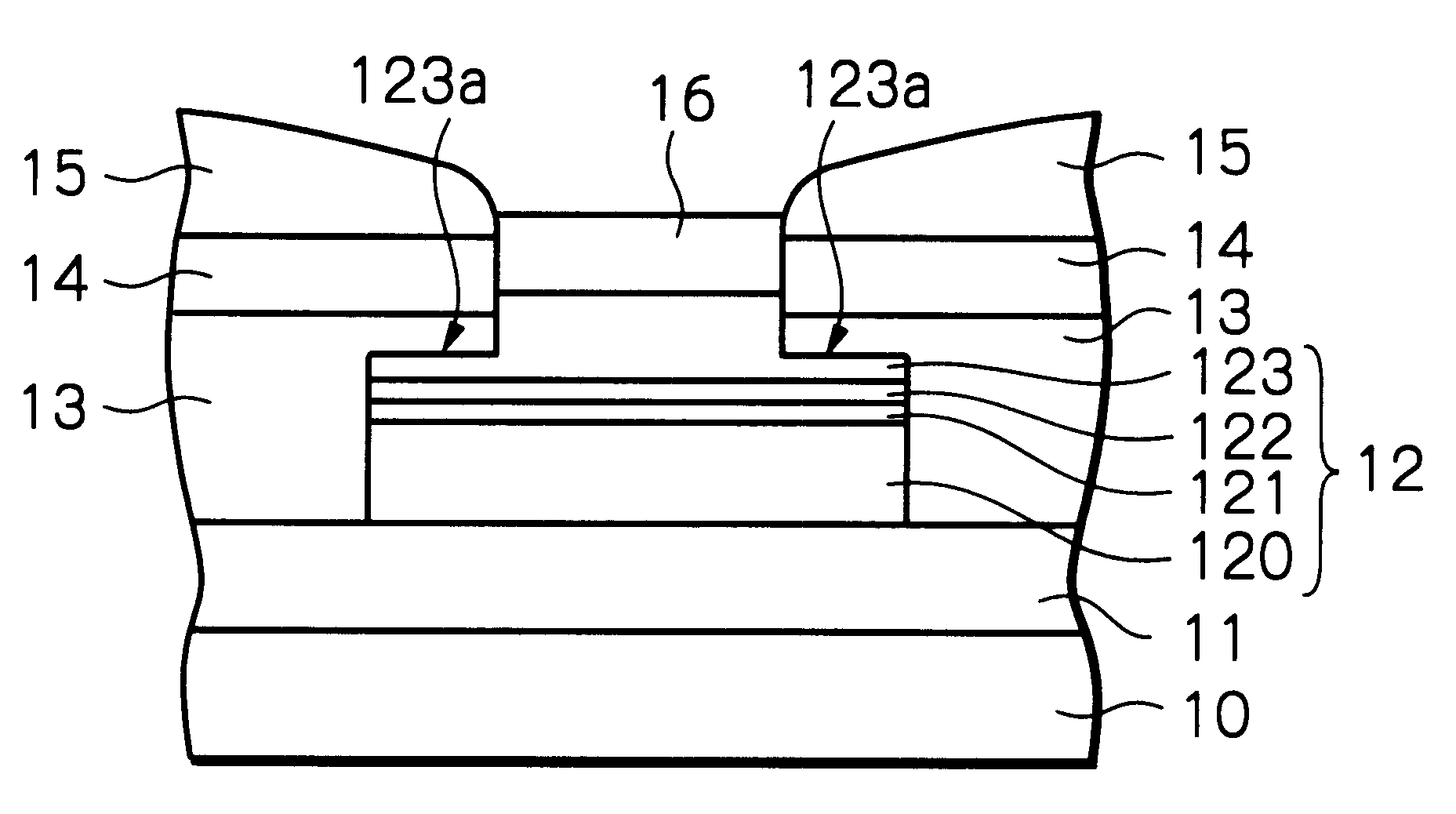Magnetoresistive effect sensor with double-layered film protection layer
a technology of magnetoresistive effect and film protection layer, which is applied in the field of magnetoresistive effect sensor with double-layer film protection layer, can solve the problems of degradation of sensor output, barkhausen noise to produce, and change in the magnetization or pinned direction in the pinned layer and/or the magnetic characteristics
- Summary
- Abstract
- Description
- Claims
- Application Information
AI Technical Summary
Benefits of technology
Problems solved by technology
Method used
Image
Examples
example 2
In this example 2, a single layer film of Cu (5 nm) is used as for the cap layer. Tables 5-7 indicate relationship between the milled depth (from the free layer surface) of the free layer of NiFe and the longitudinal bias at the center of the test piece. Table 5 is the measured result of the test piece to which the ion milling was executed just after deposition namely before annealing, Table 6 is the measured result of the test piece to which the ion milling was executed after annealing of 250.degree. C.--5 hours and Table 7 is the measured result of the test piece to which the ion milling was executed after annealing of 300.degree. C.--5 hours. In Tables 5 and 7, composition ratio of Cu with respect to NiFe at the milled NiFe layer surface measured by the Auger spectralphotometry (Auger intensity ratio) are additionally indicated.
TABLE 6
TABLE 6
In case that the ion milling was done just after deposition namely before annealing (Table 5), the longitudinal bias would not become 30 Oe ...
example 3
In this example 3, a single layer film of Al (5 nm) is used as for the cap layer. Tables 8-10 indicate relationship between the milled depth (from the free layer surface) of the free layer of NiFe and the longitudinal bias at the center of the test piece. Table 8 is the measured result of the test piece to which the ion milling was executed just after deposition namely before annealing, Table 9 is the measured result of the test piece to which the ion milling was executed after annealing of 250.degree. C.--5 hours, and Table 10 is the measured result of the test piece to which the ion milling was executed after annealing of 300.degree. C.--5 hours. Since Auger intensity ratios in this example exhibit the similar tendency as that in the examples 1 and 2, they are not indicated in these Tables.
TABLE 8
TABLE 10
In case that the ion milling was done just after deposition namely before annealing (Table 8), the longitudinal bias would not become 30 Oe or more until the milled depth of the f...
example 4
In this example 4, a single layer film of Rh (5 nm) is used as for the cap layer. Tables 11-13 indicate relationship between the milled depth (from the free layer surface) of the free layer of NiFe and the longitudinal bias at the center of the test piece. Table 11 is the measured result of the test piece to which the ion milling was executed just after deposition namely before annealing, Table 12 is the measured result of the test piece to which the ion milling was executed after annealing of 250.degree. C.--5 hours, and Table 13 is the measured result of the test piece to which the ion milling was executed after annealing of 300.degree. C.--5 hours. Since Auger intensity ratios in this example exhibit the similar tendency as that in the examples 1 and 2, they are not indicated in these Tables.
TABLE 11
TABLE 13
In case that the ion milling was done just after deposition namely before annealing (Table 11), the longitudinal bias would not become 30 Oe or more until the milled depth of ...
PUM
 Login to View More
Login to View More Abstract
Description
Claims
Application Information
 Login to View More
Login to View More - R&D
- Intellectual Property
- Life Sciences
- Materials
- Tech Scout
- Unparalleled Data Quality
- Higher Quality Content
- 60% Fewer Hallucinations
Browse by: Latest US Patents, China's latest patents, Technical Efficacy Thesaurus, Application Domain, Technology Topic, Popular Technical Reports.
© 2025 PatSnap. All rights reserved.Legal|Privacy policy|Modern Slavery Act Transparency Statement|Sitemap|About US| Contact US: help@patsnap.com



